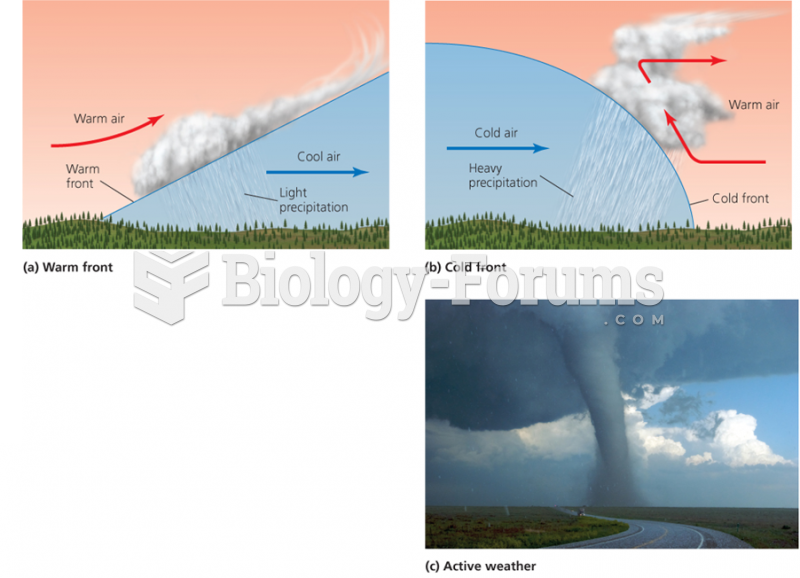|
|
|
Though newer “smart” infusion pumps are increasingly becoming more sophisticated, they cannot prevent all programming and administration errors. Health care professionals that use smart infusion pumps must still practice the rights of medication administration and have other professionals double-check all high-risk infusions.
Approximately 15–25% of recognized pregnancies end in miscarriage. However, many miscarriages often occur before a woman even knows she is pregnant.
A seasonal flu vaccine is the best way to reduce the chances you will get seasonal influenza and spread it to others.
Thyroid conditions cause a higher risk of fibromyalgia and chronic fatigue syndrome.
The average human gut is home to perhaps 500 to 1,000 different species of bacteria.







